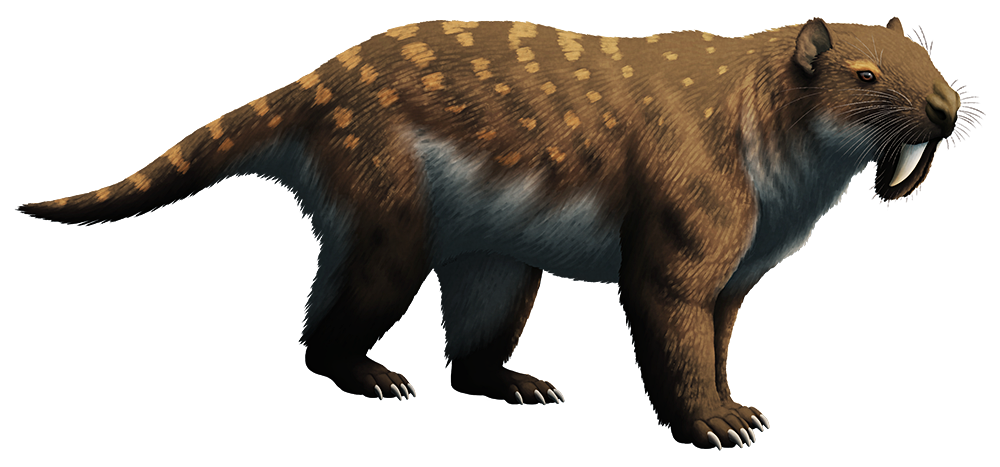Along with the marsupials and the polydolopimorphs, the sparassodonts were one of the lineages of metatherian mammals that inhabited South America during its “great isolation” for most of the Cenozoic. And despite having to share the large carnivore niches with both the terror birds and the sebecosuchian crocs, they still managed to become the main mammalian predators of the region.
Their first definite fossils come from the start of the Paleocene (~65 mya), but they probably actually originated sometime in the Late Cretaceous before the mass extinction. A currently-unnamed skull from Mongolia (~70 mya) appears to be either an early sparassodont or a very close relative, and a North American metatherian called Varalphadon (~90 mya) may also be linked to the group. It’s possible that, like the marsupials, they may have first evolved in North America and later spread into South America before it became isolated.
Like their marsupial relatives they would have given birth to tiny undeveloped young, although we don’t know for certain if they actually had pouches or not. Their epipubic bones were highly reduced, so it’s possible they didn’t have pouches – but they also might have had mostly cartilaginous epipubics (like thylacines) that just didn’t fossilize.
Over the course of the Cenozoic the sparassodonts convergently evolved many similar features to placental carnivorans, with carnassial teeth for shearing through flesh and a wide variety of body shapes ranging from small weasel-like forms to long-snouted ambush hunters to large hyaena-like bone-crushers.
But by far the most famous members of the group were the thylacosmilids. First appearing in the Early Miocene, about 20-15 million years ago, these sparassodonts developed huge elongated canine teeth that resembled those of sabertoothed cats. Unlike the felid sabertooths, however, thylacosmilids’ fangs grew continuously and their lower jaws had long bony flanges that supported and protected their teeth when theirs jaws were closed.
Thylacosmilus atrox was the last and most highly specialized of the thylacosmilids, living from the Late Miocene to the Late Pliocene, around 9-3 million years ago. About 1.2-1.5m long (~4-5′) and standing 60cm tall at the shoulder (2′) it was similar in size to a modern jaguar – not huge compared to some placental predators, but still one of the largest of all known carnivorous metatherians.
Despite its huge fangs it actually had a fairly weak bite force, instead relying on its strong forelimbs to immobilize its prey before delivering precise deep stabs into soft body parts using powerful neck muscles. The structure of its limbs also suggests it wasn’t a fast runner, and it probably had to stalk or ambush its targets.
Although the extinction of Thylacosmilus and the other last sparassodonts is often blamed on being out-competed by similar placental carnivores arriving during the Great American Interchange, it seems like that wasn’t actually the case. Many of their northern placental equivalents such as Smilodon didn’t enter South America until the mid-Pleistocene (~1-0.7 mya), over 1.5 million years after the last record of any living sparassodonts. So it’s likely they never actually met each other, and the disappearance of the sparassodonts may be more linked to cooling climates in the Pliocene and early Pleistocene.

